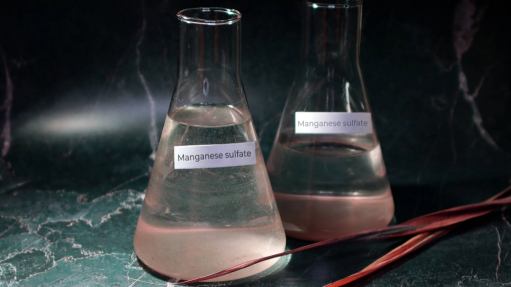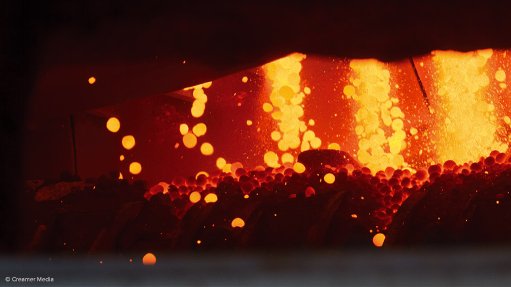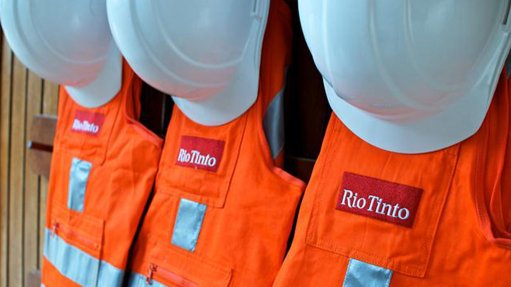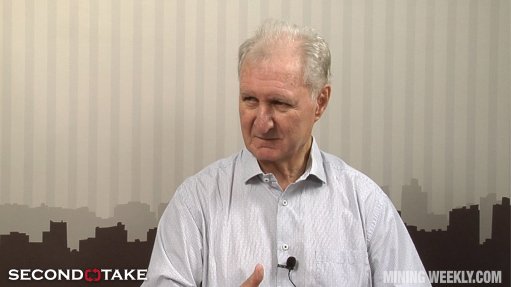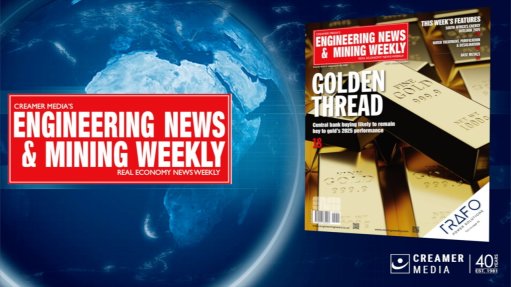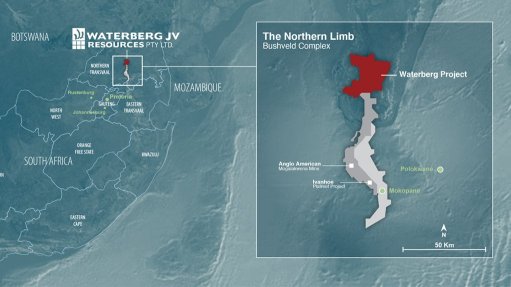Uranium-endowed South Africa stands to benefit from ambitions to improve electricity access in Africa

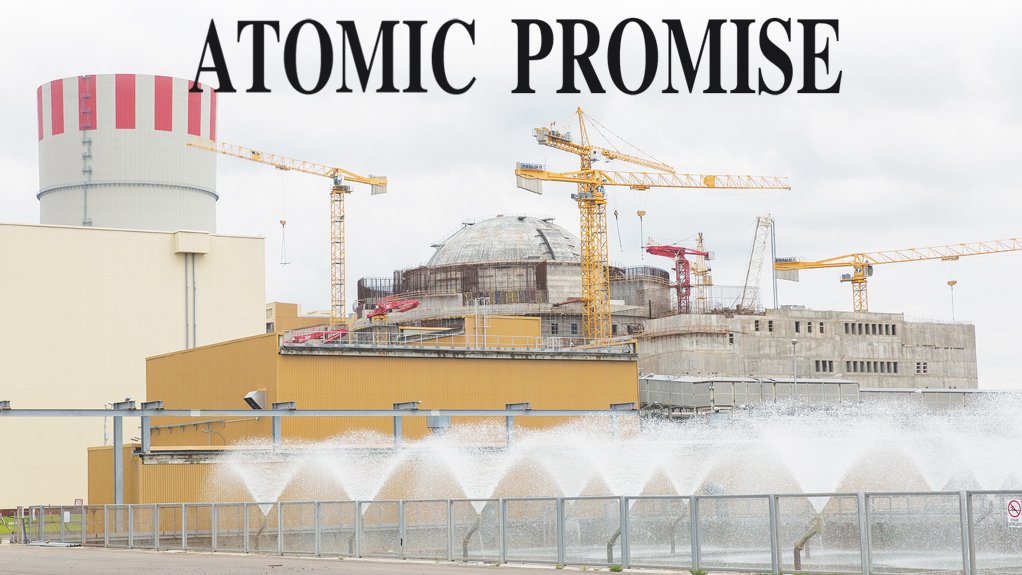


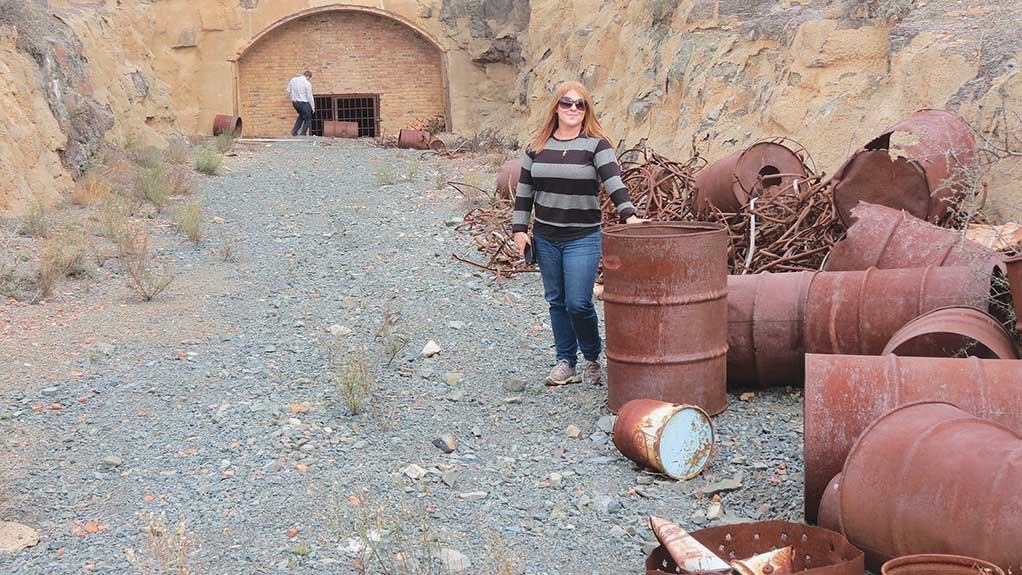
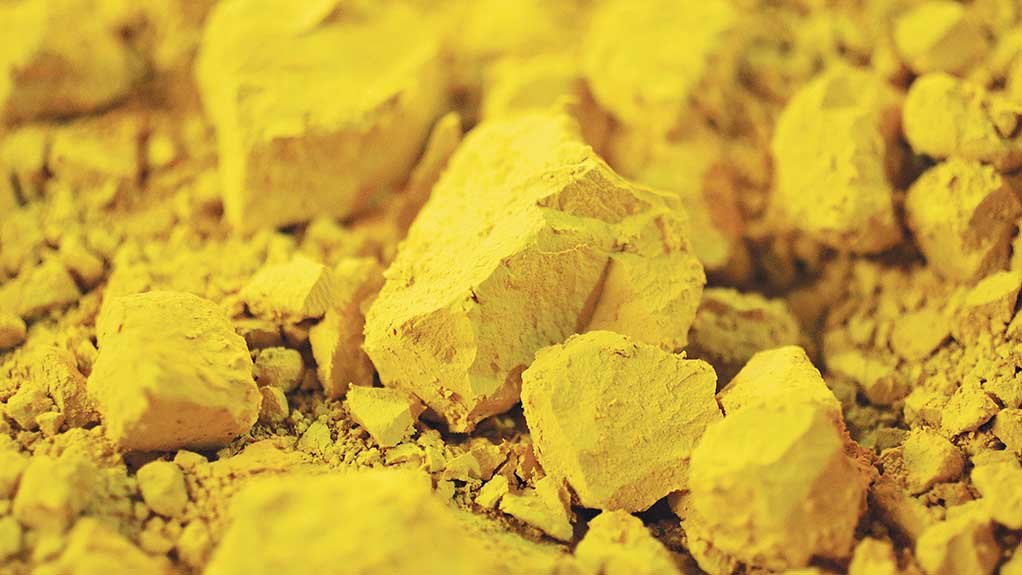
PEBBLE-BED FUEL Pebble-bed nuclear power reactors boast significant potential to power many African regions. A single fuel ball like this is enough for the average person’s lifetime energy requirement
URANIUM FUEL ELEMENT Enriched uranium is packed into a fuel element like this and loaded into a nuclear power station as a source of heat to produce electricity
URANIUM LEGACY South Africa has a rich history of mining uranium. Pictured is a uranium-producing mine in the Western Cape dating back to 1978
YELLOWCAKE South Africa could stand to benefit significantly from beneficiating uranium into a format suitable to be exported as interest grows for nuclear power stations
In tandem with growing ambitions to increase access to electricity for many African citizens who currently have limited or no access to electricity comes the call for new large-scale power stations to be built. This has prompted a keen interest in nuclear power stations and, consequently, a burgeoning demand for uranium as a fuel source.
Many commentators worldwide expect significant growth in the demand for uranium or any other atomic fuel that can be used to fuel a nuclear power station. This projected growth will, in turn, lead to the need for increased beneficiation and enrichment of such commodities.
South Africa has a long history of mining uranium, which, in the early days, was widely deemed a waste product. In fact, uranium mining in the country is synonymous with gold mining, as the minerals often occur in the same deposits. The bulk of the first uranium South Africa exported to overseas markets was for use in nuclear power stations, and the first nuclear bombs made by the US originated from South Africa, says nuclear project management company Nuclear Africa CEO Kelvin Kemm. He is also the chairperson of the South African Nuclear Energy Corporation and has a vested interest in seeing the peaceful proliferation of nuclear technology throughout Africa.
When it has been beneficiated and enriched, uranium is used to produce heat and boil water to power large electricity- generating infrastructure (similar to how coal is used to boil water in coal-fired power stations), with the pressurised steam fed into large turbines and subsequently used to power stators and generate electricity.
Kemm notes that South Africa stands to benefit from the projected increase in the demand for uranium – in both its natural and enriched forms – from Africa and globally.
According to Department of Mineral Resources statistics, South African production of uranium – the bulk of which comprises three uranium to eight oxygen atoms – totalled about 900 t/y in 2000, increasing to more than 1 000 t/y in 2001 and steadily declining to about 450 t in 2016. The Chamber of Mines states that this decline mirrors that of gold production.
Electrifying Africa
A growing number of African countries are keenly looking to nuclear energy. A noteworthy example is Nigeria, which plans to generate as much as 4 000 MW of its electricity by means of nuclear reactors by 2025 with the support of the International Atomic Energy Agency (IAEA). Further, Ghana plans to build a 400 MW to 1 000 MW nuclear power plant, while Kenya is mulling the introduction of nuclear power generation capability through the Kenya Nuclear Electricity Board, established in 2014, to catalyse development.
Kenya’s East African neighbour, Uganda, drafted the Atomic Energy Bill in 2008 to regulate the use of ionising radiation and provide a framework to develop nuclear power generation, and its government has signed an agreement with the IAEA to initiate moves in that direction.
Meanwhile, Namibia is considering using its uranium reserves, equivalent to 7% of the global total, to produce electricity, thereby slashing electricity imports from South Africa, which currently account for as much as two-thirds of total supplies.
For its part, South Africa plans to expand its diversified generation fleet with an additional 9.6 GW of generation capacity through the construction of several nuclear power stations.
Further, global nuclear expansion is reaching its highest levels in 28 years, with 57 reactors currently under construction, according to a January 2017 report by the World Nuclear Association (WNA). China has the lion’s share of the new build projects – a total of 21.
WNA director-general Agneta Rising frequently avers when articulating the association’s vision for the future of the world’s electricity – the Harmony Programme – that nuclear energy has a major role to play in the foreseeable future. This programme is based on the International Energy Agency’s 2 ºC scenario – avoiding the most damaging consequences of climate change by limiting the average global temperature increase to 2 ºC above preindustrial levels. According to Rising, this will require a significant increase in nuclear energy, with obvious growth in the uranium mining sector.
The Harmony Programme envisages a diverse mix of low-carbon-generating technologies deployed in such a manner that the benefits of each are increased, while the negative impacts are reduced. The target for nuclear energy globally is to provide 25% of electricity in 2050, requiring the addition of about 1 000 GW of new nuclear capacity by that time.
“All the uranium required for such expansion into nuclear must come from somewhere, so, with the existing and yet-to-be-found reserves in South Africa, we need to capitalise and prepare for such a demand,” says Kemm.
Designed for Africa
Nuclear development throughout Africa needs to be planned from an African perspective and should not rely on existing operating models, such as the electricity grids of the US and Europe, as Africa has different needs and a vastly different environment and market, he says.
Many new nuclear power reactors for Africa would be significantly smaller than most of those currently being built for more developed nations, ranging in capacity from about 100 MW to 500 MW, compared with the reactors being built elsewhere, the generation capacity of which is about 1 700 MW.
Kemm says such a specific reactor requirement positions the pebble-bed reactor technology perfectly for the African market, as the reactors can be built small and modular, allowing for faster construction. Further, up to five pebble-bed reactors can be managed from one control room, instead of having one control room for each reactor, as is the case with larger reactors. The modular reactors also facilitate the addition of more reactors at later stages, when this is required.
Pebble-bed reactors are also ideal for operation using a relatively new nuclear fuel – thorium – which, Kemm says, will not fission as spontaneously as uranium and, therefore, cannot be used to make nuclear bombs. This property of thorium allows for the more secure transport of nuclear fuel to emerging nuclear nations.
Pebble-bed reactors use fuel in the form of balls, which can be easily transported, stockpiled and loaded into the reactor. This ball format allows for easier management and transport of spent fuel, as well as easier stockpiling and loading into the reactor.
“One fuel ball for a pebble-bed reactor is equivalent to the average person’s lifetime energy requirement,” he says.
Kemm points out that the first nuclear power reactors in the UK and the US – introduced during the 1950s – were fuelled using thorium, much of which was sourced from South Africa.
Thorium, he says, is much more widely distributed throughout the planet than uranium; however, in most overseas reserves, it is much more diluted than it is in South Africa, making it more difficult to mine outside this country.
“The great advantages of thorium is that it cannot be used to make bombs. It cannot go bang!” he emphasises.
Further, thorium also produces a much milder high-level waste once the fuel has been used in a power reactor, compared with uranium.
Kemm explains that uranium will fission (the nucleus will break in half and release energy), but thorium will not do this spontaneously – it requires a neutron to increase the nucleus size to put it into an unstable state, after which it can fission. To undertake this transition in a thorium reaction requires a ‘kick-start’ from uranium, he adds.
Local Fuel Manufacture
The requirement for fuel balls by up-and-coming pebble-bed reactors in Africa would also place South Africa at a significant advantage because there is a manufacturing facility at the Pelindaba nuclear research facility, near the Hartbeespoort dam, in the North West.
This facility is currently on care and maintenance, producing a limited number or uranium balls a year for plant-testing purposes. Kemm notes that the most recent audits conducted by an overseas oversight association certified the fuel balls made at the facility as being on a par with “the best in the world”.
He points out that this facility can quickly and easily be fully recommissioned should the need for the ramped-up manufacture of fuel balls arise, while more plants can easily be built to further increase the local beneficiation of uranium and/or thorium using its design and technology template.
Kemm, therefore, suggests that local uranium beneficiation facilities and nuclear fuel manufacturing plants be planned immediately to ensure the country meets demand when new reactors come on line.
He also points out that a sell-and-return scheme would play well into African markets that are new to nuclear power, whereby South African-made nuclear fuel would be sold to specific African countries and returned to South Africa for storage once it has been used. This would help the African countries to not only rapidly embark on building nuclear power stations but also deal with the issue of handling spent nuclear fuel, which can be daunting to newcomers.
Kemm argues that “every single African country can go nuclear tomorrow”, implying that nuclear development and power plant construction can be rapidly implemented, but that dedicated focus is required by the countries and their respective governments to buy into nuclear and start developing the legal framework for projects to begin.
“There is about six years’ worth of work to compile nuclear legislation and put regulatory practice in place. It also requires the identification of appropriate sites that have the correct geological and meteorological aspects on which plants can be constructed.”
Kemm concludes that countries planning to start nuclear power plants should “very quickly make themselves respectable in the eyes of the IAEA” because, if the IAEA does not sanction a specific country as a nuclear recipient, other member countries of the IAEA will not be allowed to sell nuclear fuel to that country.
Comments
Press Office
Announcements
What's On
Subscribe to improve your user experience...
Option 1 (equivalent of R125 a month):
Receive a weekly copy of Creamer Media's Engineering News & Mining Weekly magazine
(print copy for those in South Africa and e-magazine for those outside of South Africa)
Receive daily email newsletters
Access to full search results
Access archive of magazine back copies
Access to Projects in Progress
Access to ONE Research Report of your choice in PDF format
Option 2 (equivalent of R375 a month):
All benefits from Option 1
PLUS
Access to Creamer Media's Research Channel Africa for ALL Research Reports, in PDF format, on various industrial and mining sectors
including Electricity; Water; Energy Transition; Hydrogen; Roads, Rail and Ports; Coal; Gold; Platinum; Battery Metals; etc.
Already a subscriber?
Forgotten your password?
Receive weekly copy of Creamer Media's Engineering News & Mining Weekly magazine (print copy for those in South Africa and e-magazine for those outside of South Africa)
➕
Recieve daily email newsletters
➕
Access to full search results
➕
Access archive of magazine back copies
➕
Access to Projects in Progress
➕
Access to ONE Research Report of your choice in PDF format
RESEARCH CHANNEL AFRICA
R4500 (equivalent of R375 a month)
SUBSCRIBEAll benefits from Option 1
➕
Access to Creamer Media's Research Channel Africa for ALL Research Reports on various industrial and mining sectors, in PDF format, including on:
Electricity
➕
Water
➕
Energy Transition
➕
Hydrogen
➕
Roads, Rail and Ports
➕
Coal
➕
Gold
➕
Platinum
➕
Battery Metals
➕
etc.
Receive all benefits from Option 1 or Option 2 delivered to numerous people at your company
➕
Multiple User names and Passwords for simultaneous log-ins
➕
Intranet integration access to all in your organisation












